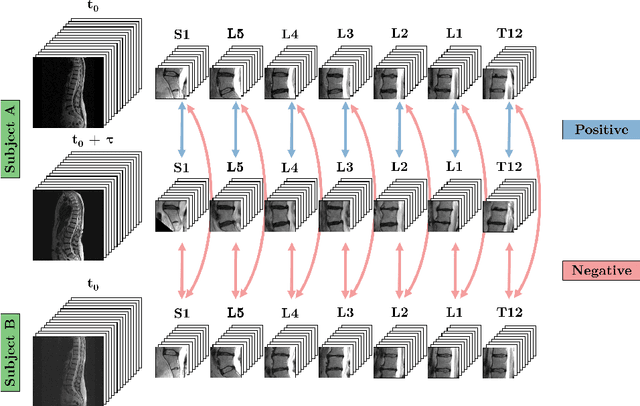Self-Supervised Learning for Spinal MRIs
Paper and Code
Aug 01, 2017



A significant proportion of patients scanned in a clinical setting have follow-up scans. We show in this work that such longitudinal scans alone can be used as a form of 'free' self-supervision for training a deep network. We demonstrate this self-supervised learning for the case of T2-weighted sagittal lumbar Magnetic Resonance Images (MRIs). A Siamese convolutional neural network (CNN) is trained using two losses: (i) a contrastive loss on whether the scan is of the same person (i.e. longitudinal) or not, together with (ii) a classification loss on predicting the level of vertebral bodies. The performance of this pre-trained network is then assessed on a grading classification task. We experiment on a dataset of 1016 subjects, 423 possessing follow-up scans, with the end goal of learning the disc degeneration radiological gradings attached to the intervertebral discs. We show that the performance of the pre-trained CNN on the supervised classification task is (i) superior to that of a network trained from scratch; and (ii) requires far fewer annotated training samples to reach an equivalent performance to that of the network trained from scratch.
 Add to Chrome
Add to Chrome Add to Firefox
Add to Firefox Add to Edge
Add to Edge